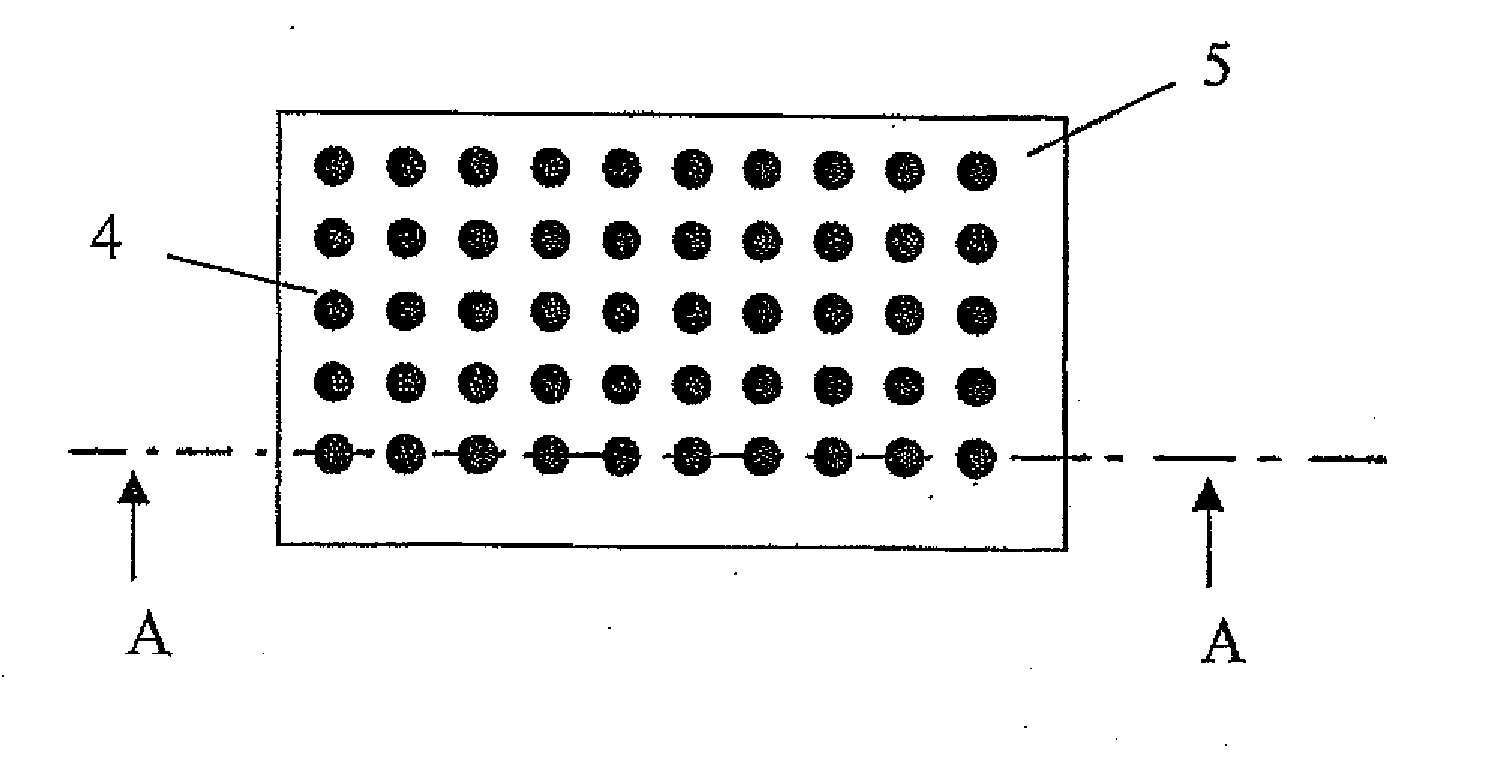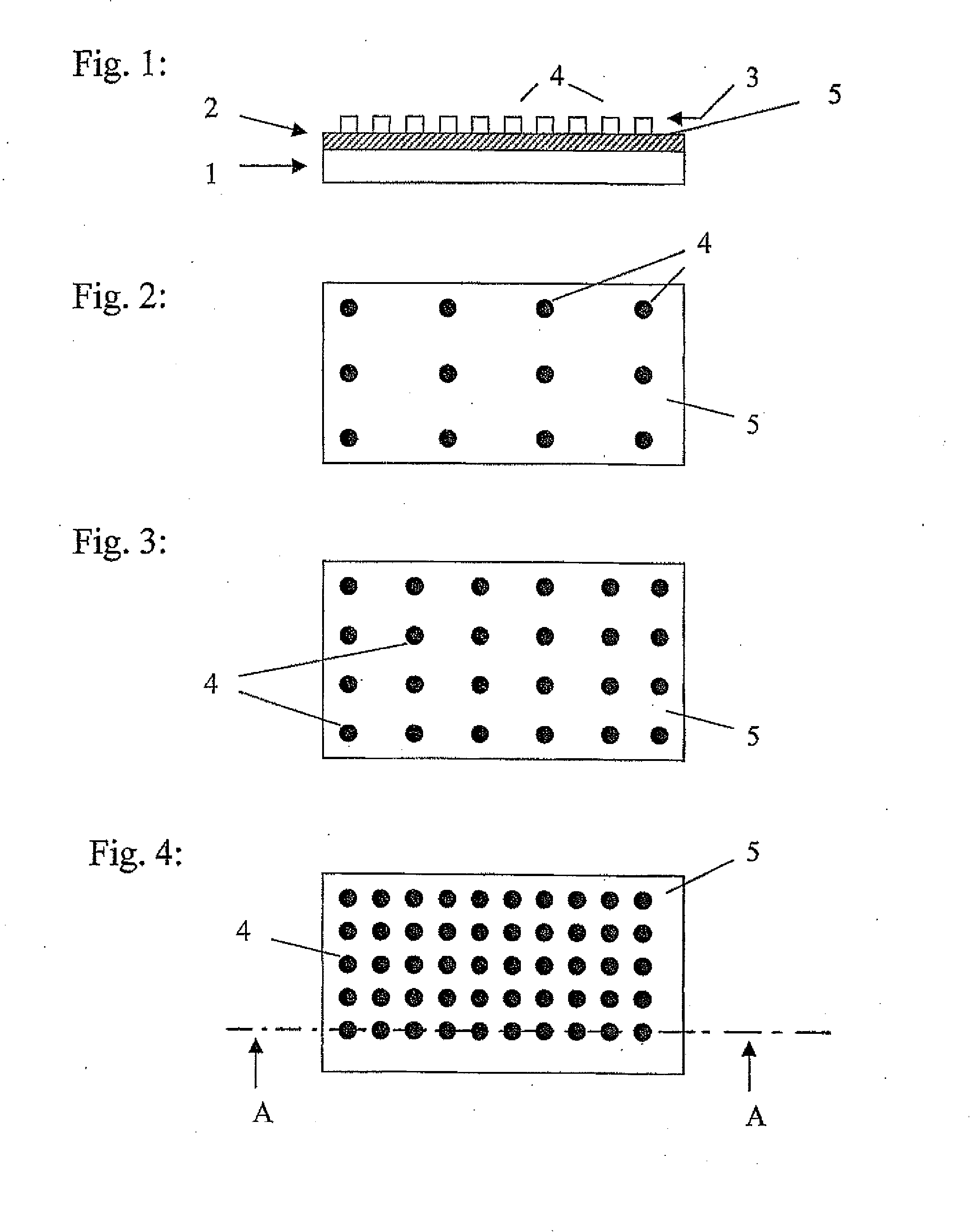Method for producing a non-slip coating
a non-slip coating and coating technology, applied in the field of non-slip coating production, can solve the problems of high cost, high treatment characteristics, and high cost of non-slip coating materials, and achieve the effects of improving the visual properties of the carrier, and reducing the thickness of the layer
- Summary
- Abstract
- Description
- Claims
- Application Information
AI Technical Summary
Benefits of technology
Problems solved by technology
Method used
Image
Examples
Embodiment Construction
[0030]FIG. 1 is a schematic view of a material according to the invention consisting of a carrier 1, optionally a printed layer 2, and a covering layer 3. The carrier 1 can for example be a paper web, a sheet of paper, a cardboard, a textile, an aluminum foil, a plastics material film, a composite sheet made of at least two of the aforementioned materials or the like. In any case, the carrier 1 can be unwound off a roll or in the form of a sheet, and is not suitable to be supplied to subsequent treatment steps during the course of automated treatment processes.
[0031]The printed layer 2 can also consist of a plurality of colored layers, for example if a plurality of colored planes is applied during the course of the imprinting of the carrier 1.
[0032]As mentioned hereinbefore, it is necessary for trouble-free treatment of the carrier 1 in subsequent treatment steps for the carrier 1 to have specific treatment characteristics, for example a surface composition which ensures easy handli...
PUM
| Property | Measurement | Unit |
|---|---|---|
| thickness | aaaaa | aaaaa |
| thickness | aaaaa | aaaaa |
| area | aaaaa | aaaaa |
Abstract
Description
Claims
Application Information
 Login to View More
Login to View More - R&D Engineer
- R&D Manager
- IP Professional
- Industry Leading Data Capabilities
- Powerful AI technology
- Patent DNA Extraction
Browse by: Latest US Patents, China's latest patents, Technical Efficacy Thesaurus, Application Domain, Technology Topic, Popular Technical Reports.
© 2024 PatSnap. All rights reserved.Legal|Privacy policy|Modern Slavery Act Transparency Statement|Sitemap|About US| Contact US: help@patsnap.com









